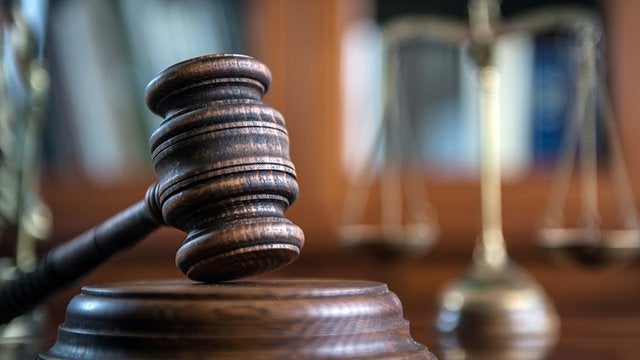An appeals court sided with the Trump administration on Tuesday in its effort to resume executions of federal death row prisoners, after a 16-year hiatus.
However, a legal challenge by inmates was sent back to a lower court for further review. It is therefore unclear whether, and if so when, executions might resume.
The Justice Department announced in July 2019 that it would restart federal executions and scheduled five for inmates convicted of murders and sex crimes.
The inmates challenged their executions and a trial court judge, Tanya Chutkan of Washington, temporarily halted them in November, just weeks before the first execution was scheduled.
She ruled that the federal government’s execution procedure likely violates the Federal Death Penalty Act. The government procedure is for lethal injection using one drug, pentobarbital, but Judge Chutkan said that this was inconsistent with the 1994 law requiring federal executions be carried out “in the manner prescribed by the law of the state in which the sentence is imposed.”
A three-judge panel at the US Court of Appeals for the DC Circuit disagreed in a 2-1 ruling on Tuesday, with two judges appointed by President Donald Trump siding with the administration.
Each judge offered a separate opinion taking a different view of what the law requires for federal execution guidelines. This vacated the lower court judge’s order halting the executions, but sent the case back for a review of additional claims made by the inmates.
The judges who sided with the federal government were Gregory Katsas, appointed by Trump in 2017, and Neomi Rao, who was appointed by Trump in 2019. Judge David Tatel, a Bill Clinton appointee, dissented.
The Justice Department declined to comment on Tuesday on the case or whether it would schedule new execution dates while litigation is ongoing.
Cate Stetson, an attorney for the inmates, said in an emailed statement that the Trump administration had “rushed the process in order to carry out executions without meaningful judicial review of the legality and constitutionality of the new execution procedures.”
Lawyers for the inmates are considering their options following the ruling, including asking the full appeals court to review the case.
Robert Dunham, the executive director of the Death Penalty Information Centre, said the judges’ decision “raises more questions than it answers” and “doesn’t give much guidance going forward.”
“The one thing that all the judges agree on is there are other significant factual and legal issues that the district court still needs to resolve,” he said.
Generally speaking, he said, the coronavirus pandemic has meant the postponement of trials, hearings and other proceedings in death penalty cases, as well as the delay of scheduled executions in Texas.
When the resumption of federal executions was announced in July 2019, the Death Penalty Information Centre noted that opinion polls showed that support for the death penalty is at near historic lows, declining from a peak in 1994.
A 2018 poll found that 54 per cent of Americans support the death penalty, but under half believe it is applied fairly, underlining the vast racial and economic discrimination that plays out in death penalty policy. A staggering 42 per cent of people put to death in the US are black, even though African Americans account for just 12 per cent of the population.
Executions on the federal level have been rare. The government has put to death only three defendants since restoring the federal death penalty in 1988. The most recent was in 2003, when Louis Jones was executed for the 1995 kidnapping, rape and murder of a young female soldier.
In 2014, following a botched state execution in Oklahoma, President Barack Obama directed the Justice Department to conduct a broad review of capital punishment procedures.
Attorney General William Barr said in July 2019 that the Obama-era review had been completed and that executions would resume using a new single-drug procedure. The procedure is similar to the procedure used in several states but not all.







